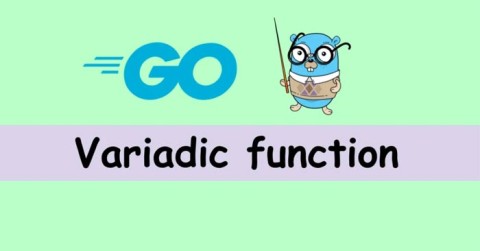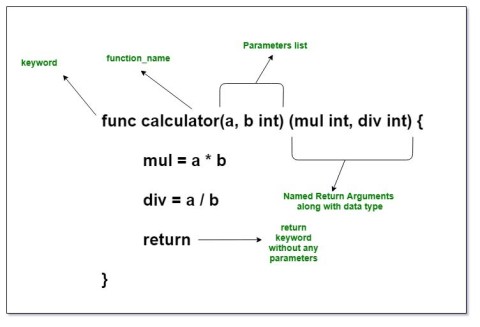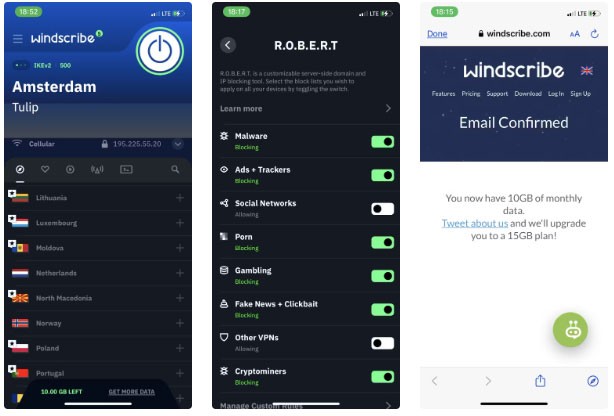Jak używać stałych w Golang

Co to jest Constant lub Const w języku Golang? Oto, co musisz wiedzieć o korzystaniu ze stałych w języku Go.
W języku Go struktury umożliwiają grupowanie elementów różnych typów w jedną jednostkę, co jest przydatne przy modelowaniu rzeczywistych jednostek. Anonimowe struktury w Golangu to tymczasowe struktury bez nazw, używane do jednorazowych celów, natomiast pola anonimowe umożliwiają osadzanie nienazwanych pól.

Na przykład:
package main
import "fmt"
// struct học sinh với cấu trúc và trường ẩn danh
type Student struct {
struct { // Cấu trúc bên trong ẩn danh cho thông tin cá nhân
name string
enrollment int
}
GPA float64 // Trường chuẩn
}
func main() {
student := Student{
struct {
name string
enrollment int
}{
name: "A",
enrollment: 12345,
},
GPA: 3.8,
}
fmt.Println("Name:", student.name)
fmt.Println("Enrollment:", student.enrollment)
fmt.Println("GPA:", student.GPA)
}
Składnia:
variable := struct {
field1 dataType1
field2 dataType2 # Cấu trúc ẩn danh
// Trường bổ sung khi cần
}{value1, value2}
type StructName struct {
dataType1
dataType2 # Trường ẩn danh
// Trường ẩn danh bổ sung
}Anonimowe struktury w Go
Anonimowe struktury w języku Go są definiowane bez nazwy i są przydatne do tworzenia tymczasowych, jednorazowych struktur. Oto składnia i przykład kodu.
Składnia:
variable := struct {
field1 dataType1
field2 dataType2
// Các trường bổ sung khi cần
}{value1, value2}Na przykład:
package main
import "fmt"
// Cấu trúc sinh viên với cấu trúc bên trong ẩn danh cho thông tin cá nhân
type Student struct {
personalDetails struct { // Cấu trúc ẩn danh bên trong cho thông tin cá nhân
name string
enrollment int
}
GPA float64 // Trường chuẩn
}
func main() {
// Khởi tạo cấu trúc bên trong cho student
student := Student{
personalDetails: struct {
name string
enrollment int
}{
name: "A",
enrollment: 12345,
},
GPA: 3.8,
}
// Hiện giá trị
fmt.Println("Name:", student.personalDetails.name)
fmt.Println("Enrollment:", student.personalDetails.enrollment)
fmt.Println("GPA:", student.GPA)
}
Wynik:
Name: A
Enrollment: 12345
GPA: 3.8Ten kod definiuje strukturę Studenta zawierającą anonimową strukturę personalDetails , przechowującą imię i nazwisko oraz informacje rejestracyjne. Następnie zainicjuj studenta wartościami dla tych pól i wydrukuj je.
Pola anonimowe
Pola anonimowe w języku Go pozwalają na definiowanie pól bez podawania ich nazw, określane są jedynie ich typy. Jest to przydatne, gdy pola naturalnie następują po nazwie typu.
Składnia
type StructName struct {
dataType1
dataType2
// Additional anonymous fields
}Na przykład:
package main
import "fmt"
// Cấu trúc học sinh bằng các trường ẩn danh
type Student struct {
int // Số đăng ký (trường ẩn danh)
string // Tên trường ẩn danh
float64 // GPA (trường ẩn danh)
}
func main() {
// Khởi tạo struct học sinh với các trường ẩn danh
student := Student{12345, "A", 3.8}
// Hiện giá trị
fmt.Println("Enrollment:", student.int)
fmt.Println("Name:", student.string)
fmt.Println("GPA:", student.float64)
}
Wynik:
Enrollment: 12345
Name: A
GPA: 3.8W tym przypadku typy danych ( int, string, float64 ) pełnią funkcję nazw pól, więc dostęp do wartości zależy od typów.
Ważne punkty do zapamiętania o polach anonimowych w Golang
1. Wymaganie unikalne: Nie można używać dwóch pól tego samego typu w jednej strukturze. Na przykład:
type InvalidStudent struct {
int
int // Error: duplicate type
}2. Łączenie pól nazwanych i anonimowych: W strukturze można łączyć pola anonimowe i nazwane.
type Student struct {
id int // Named field
int // Anonymous field
}Co to jest Constant lub Const w języku Golang? Oto, co musisz wiedzieć o korzystaniu ze stałych w języku Go.
Funkcje zmienne w języku Go umożliwiają przekazywanie zmiennej liczby argumentów do funkcji. Oto wszystko, co musisz wiedzieć o funkcjach ulotnych w języku Go.
W języku Golang nazwane parametry zwracane są często określane mianem parametrów nazwanych. Język Go pozwala na nazywanie parametrów zwracanych lub wyników funkcji w sygnaturze lub definicji funkcji.
Słowo kluczowe – słowa kluczowe to wyrazy w języku, które są używane w odniesieniu do pewnego wewnętrznego procesu lub reprezentują pewne zdefiniowane wcześniej działanie. Oto, co musisz wiedzieć o słowach kluczowych w języku Golang.
Typ danych określa typ danych, jakie może zawierać prawidłowa zmienna języka Go. W języku Go typy dzielą się na cztery kategorie:
W języku Go obsługiwane są dwa główne sposoby przekazywania argumentów: przekazywanie przez wartość i przekazywanie przez referencję. Go domyślnie używa przekazywania przez wartość.
W języku Go można zwracać wiele wartości z funkcji, korzystając z polecenia return. Innymi słowy, w funkcji polecenie return może zwracać wiele wartości.
Golang, podobnie jak większość innych języków programowania, posiada instrukcję switch. Oto jak używać instrukcji switch w języku Golang.
W tym artykule dowiesz się, jak używać domyślnego przypadku, aby uniknąć impasu. Najpierw jednak sprawdźmy, jaki jest przypadek impasu podczas korzystania z polecenia select w języku Go?
Czym są runy w języku Golang? Jak używać Rune w Golang? Odpowiedź znajdziesz w tym artykule.
Operatorzy pozwalają nam wykonywać różne typy operacji na operandach. W języku Go operatory można klasyfikować na podstawie ich różnych funkcji.
_(podkreślenie) w języku Golang nazywane jest pustym identyfikatorem. Identyfikator to zdefiniowana przez użytkownika nazwa komponentów programu, stosowana w celach identyfikacyjnych.
Witaj, świecie! jest pierwszym podstawowym programem w dowolnym języku programowania. Możesz napisać ten pierwszy program w języku Go, wykonując poniższe kroki.
Golang można łatwo zainstalować w systemie Windows. Poniżej znajduje się szczegółowy przewodnik krok po kroku dotyczący instalacji Golang w systemie Windows.
W tym artykule pokażemy Ci, jak odzyskać dostęp do dysku twardego w przypadku awarii. Sprawdźmy!
Na pierwszy rzut oka AirPodsy wyglądają jak każde inne prawdziwie bezprzewodowe słuchawki douszne. Ale wszystko się zmieniło, gdy odkryto kilka mało znanych funkcji.
Firma Apple wprowadziła system iOS 26 — dużą aktualizację z zupełnie nową obudową ze szkła matowego, inteligentniejszym interfejsem i udoskonaleniami znanych aplikacji.
Studenci potrzebują konkretnego typu laptopa do nauki. Powinien być nie tylko wystarczająco wydajny, aby dobrze sprawdzać się na wybranym kierunku, ale także kompaktowy i lekki, aby można go było nosić przy sobie przez cały dzień.
Dodanie drukarki do systemu Windows 10 jest proste, choć proces ten w przypadku urządzeń przewodowych będzie się różnić od procesu w przypadku urządzeń bezprzewodowych.
Jak wiadomo, pamięć RAM to bardzo ważny element sprzętowy komputera, który przetwarza dane i jest czynnikiem decydującym o szybkości laptopa lub komputera stacjonarnego. W poniższym artykule WebTech360 przedstawi Ci kilka sposobów sprawdzania błędów pamięci RAM za pomocą oprogramowania w systemie Windows.
Telewizory Smart TV naprawdę podbiły świat. Dzięki tak wielu świetnym funkcjom i możliwościom połączenia z Internetem technologia zmieniła sposób, w jaki oglądamy telewizję.
Lodówki to powszechnie stosowane urządzenia gospodarstwa domowego. Lodówki zazwyczaj mają dwie komory: komora chłodna jest pojemna i posiada światło, które włącza się automatycznie po każdym otwarciu lodówki, natomiast komora zamrażarki jest wąska i nie posiada światła.
Na działanie sieci Wi-Fi wpływa wiele czynników poza routerami, przepustowością i zakłóceniami. Istnieje jednak kilka sprytnych sposobów na usprawnienie działania sieci.
Jeśli chcesz powrócić do stabilnej wersji iOS 16 na swoim telefonie, poniżej znajdziesz podstawowy przewodnik, jak odinstalować iOS 17 i obniżyć wersję iOS 17 do 16.
Jogurt jest wspaniałym produktem spożywczym. Czy warto jeść jogurt codziennie? Jak zmieni się Twoje ciało, gdy będziesz jeść jogurt codziennie? Przekonajmy się razem!
W tym artykule omówiono najbardziej odżywcze rodzaje ryżu i dowiesz się, jak zmaksymalizować korzyści zdrowotne, jakie daje wybrany przez Ciebie rodzaj ryżu.
Ustalenie harmonogramu snu i rutyny związanej z kładzeniem się spać, zmiana budzika i dostosowanie diety to niektóre z działań, które mogą pomóc Ci lepiej spać i budzić się rano o odpowiedniej porze.
Proszę o wynajem! Landlord Sim to mobilna gra symulacyjna dostępna na systemy iOS i Android. Wcielisz się w rolę właściciela kompleksu apartamentowego i wynajmiesz mieszkania, a Twoim celem jest odnowienie wnętrz apartamentów i przygotowanie ich na przyjęcie najemców.
Zdobądź kod do gry Bathroom Tower Defense Roblox i wymień go na atrakcyjne nagrody. Pomogą ci ulepszyć lub odblokować wieże zadające większe obrażenia.



























